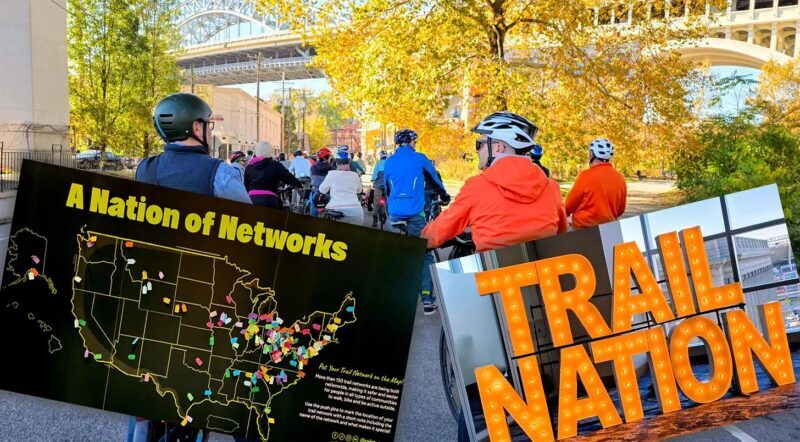America’s Trails Are Under Fire
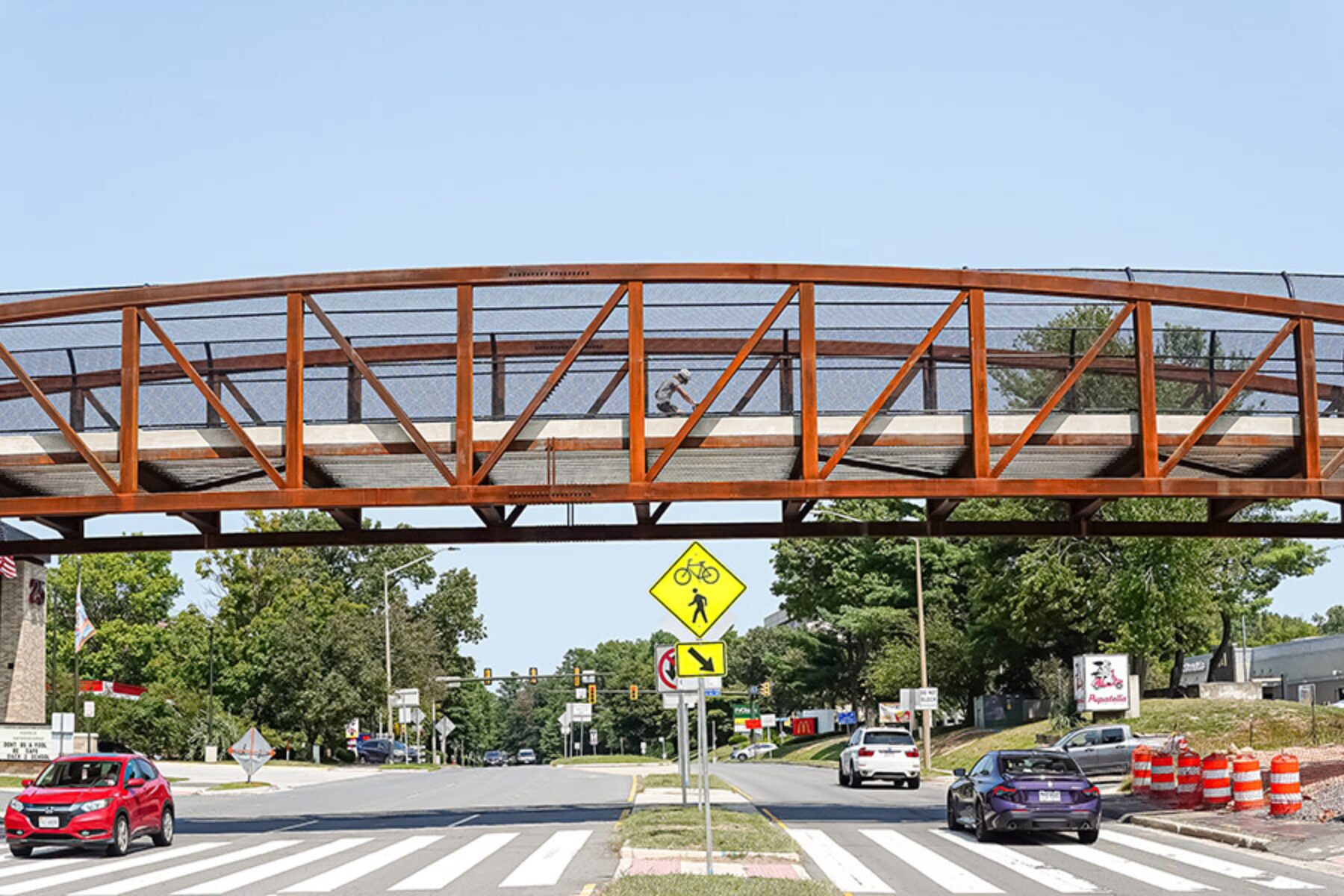
Summary
Explore the future of America’s trails amidst challenges to bike and walking path funding in the new federal transportation bill.
Estimated reading time: 9 minutes
Earlier this month, Rep. Sam Graves of Missouri—chair of the House Transportation and Infrastructure Committee—vowed that the new transportation bill currently being drafted in Congress will not include funding for “bike paths or walking paths.”
“It’s going to be a traditional highway bill—that means building roads and bridges, laying asphalt, pouring concrete,” asserted Graves.
This affront to trails, walking and biking comes at the tail end of arguably one of the most challenging years in history for active transportation at the federal level. At a time of unprecedented demand for safe spaces to walk, bike and be active outside nationwide, as well as unprecedented rates of pedestrians and bicyclists being seriously injured or killed, the sentiment from the chair of the House T&I Committee is raising major alarm bells.

Early this year, the United States Department of Transportation (USDOT) froze billions of grant dollars that had been awarded to help communities create and connect infrastructure that would make it safer and easier to walk and bike—including canceling several previously awarded trail and active transportation grants, citing that some were “hostile to cars.”
While thousands of communities continue to await word about whether their grants will be on the chopping block, a law passed by Congress this summer erased the Neighborhood Access and Equity Program, which had supplied $750 million to provide safe walking and biking connections and had been celebrated as a historic investment in trail connectivity.
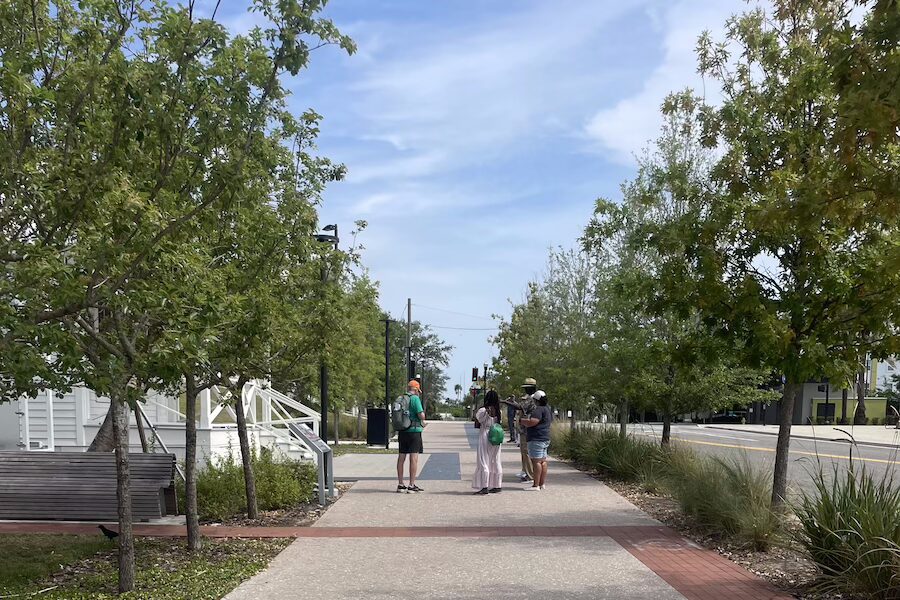
The dangerous rhetoric and damaging actions, including another bill introduced by Congress that could render a landmark 1983 statute unusable to preserve new corridors as rail-trails, are ominous. As Congress develops the next surface transportation bill, which will determine the fate of programs and funding that are the backbone of America’s active transportation system, advocates are organizing to ensure that trails, walking and biking are prioritized as essential.
Grants for Trails, Walking and Biking in the Crosshairs

Thousands of grants totaling billions of dollars in strategic investments for active transportation networks that promise to spur transportation options, economic development and quality of life have been paused and under review by the USDOT since January—sparking concerns that funding would be clawed back and projects stalled.
While news about the status of these grants has been sparse, the first wave of grant cancellations came in September. The USDOT notified communities in Illinois, Connecticut, New Mexico, Massachusetts, Alabama and San Diego that their active transportation grants were canceled because they were inconsistent with the department’s priority of moving motor vehicles and reducing vehicle congestion, even labeling some of the canceled projects “hostile to motor vehicles.”
The city of Albuquerque received notice from the USDOT in September that the $11.5 million RAISE grant it had received for the Albuquerque Rail Trail had been canceled because the department is prioritizing “projects that promote vehicular travel” through a program intended to support multiple modes of transportation—including walking and biking. The city has filed a legal challenge against the decision as it continues to pursue the 7-mile trail loop that will connect some of the city’s most historic neighborhoods with residential areas and downtown, delivering a projected annual economic impact of up to $3.2 million.
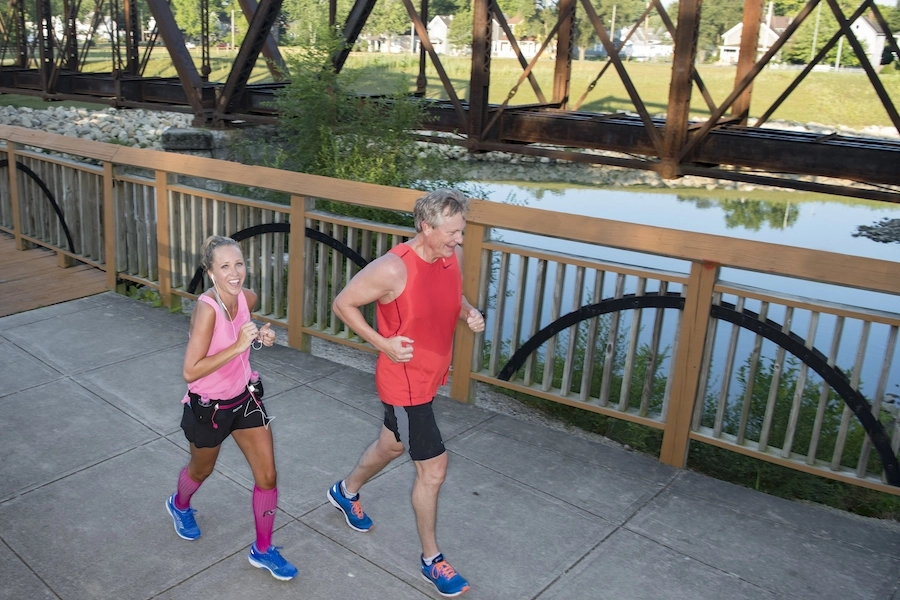
“We hope to make this into an area where people can pull off the trail and … engage in commercial activity.”
—Terry Brunner, Director of the Metropolitan Redevelopment Agency, said in a recent post about the Albuquerque Rail Trail’s potential impact (KRQE, Oct. 31, 2025)
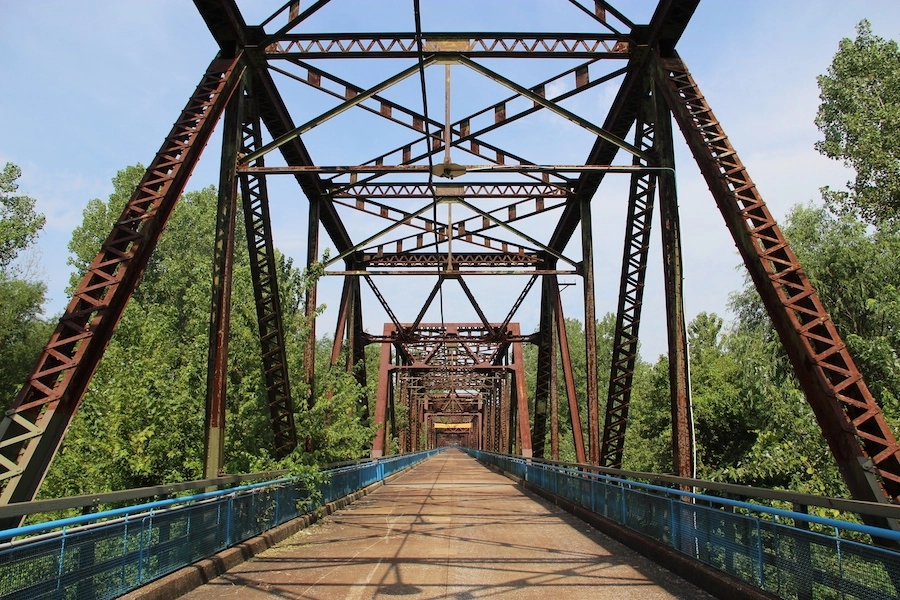
In central Illinois, McLean County received a similar letter canceling $675,000 in funding for a 9-mile extension of its Route 66 Bike Trail to complete the trail from Towanda to the county line near Chenoa. The project would connect the last portion of disconnected trail in the county, making it safer for people commuting along the corridor and promoting rural economic health.
“It is not just about recreation and tourism. It is about safety, economic development and quality of life,” said Lea Cline, chair of the county board’s Land Use and Transportation Committee, in September.
And while McLean County received good news when the state stepped in to provide $1.9 million in funding in October, the implications of the USDOT’s actions will be felt for the long term because many/most communities are unable to readily identify funding to fill in the gap. These projects represent community-driven investments to improve safety, economic development and quality of life. Canceling these grants, which were designed to catalyze and complete larger projects to address a range of transportation needs nationwide, substitutes the preferences of administration officials over those of the local communities. Too many communities simply do not have the resources to provide this level of investment—and in many cases, federal dollars are the most critical source of funding to deliver the infrastructure people need to safely get around their communities.
Landmark Railbanking Statute Is Under Attack
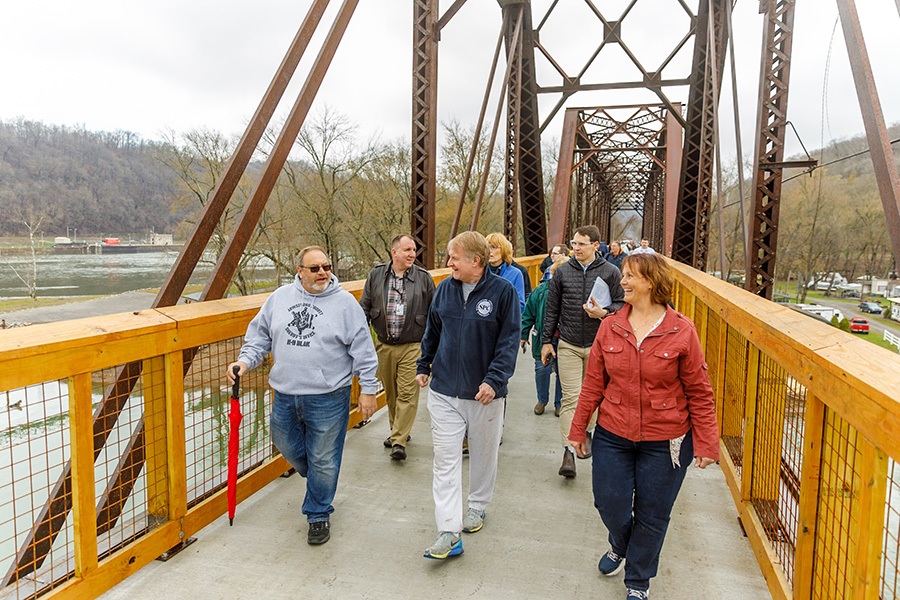
As communities continue to navigate uncertainty around federal grant funding, a new bill being considered in Congress, H.R. 4924, the “Rails to Trails Landowner Rights Act,” brings a new layer of threats to trail development. This bill could render the railbanking statute—responsible for thousands of miles of essential community infrastructure—unusable, putting trail projects across the country at great risk.
Railbanking was established in 1983 as an amendment to the National Trails System Act and is a fundamental federal tool to preserve unused rail corridors by allowing their interim use as trails—maintaining the option to reinstate rail service for future transportation needs.

Through railbanking, Congress has safeguarded America’s rail corridors, “ensuring that they remain intact for potential rail reactivation while providing communities with safe access to the outdoors and engines for tourism and economic revitalization—sparking growth and increasing quality of life in rural, urban and suburban areas nationwide.
If passed, bill H.R. 4924 would impose a number of unworkable requirements on America’s communities, municipal governments and other trail managers seeking to secure railbanking agreements, while imposing new requirements on the federal Surface Transportation Board for oversight of existing rail-trails that threaten today’s trails and future rail service. RTC is organizing local leaders across the country to speak out against this bill and to protect the future of railbanking that communities across the country are counting on.
Rails to Trails Landowner Rights Act Fact Sheet and RTC Sign-On Letter
Currently, there are thousands of miles of railbanked corridors in 43 states and Washington, D.C., and more than 9,000 miles of future rail-trails ready to be developed—delivering essential infrastructure for quality of life, safe transportation options and economic development.
Learn more about the landmark 1983 railbanking statute and the potential harmful consequences of H.R. 4924.
Future of Trails Uncertain Under Next Transportation Reauthorization Bill

The Infrastructure Investment and Jobs Act (IIJA)—passed in 2021 and set to expire in September 2026—significantly increased funds for trails and active transportation programs, bolstering familiar, long-standing programs while establishing new funding opportunities for trails, walking and biking. Among the beneficiaries was Transportation Alternatives (TA), the nation’s largest and most consequential program for trails, biking and walking infrastructure.
Since 1991, TA has provided dedicated funding for active transportation infrastructure in every state, often serving as the primary funding available to create, connect and maintain this infrastructure. The program has invested $25 billion and is responsible for tens of thousands of miles of trails nationwide, which deliver an annual return on investment of over $38.5 billion—more each year than has been invested in trails in the lifetime of the program.
As Congress develops the next surface transportation bill, myriad red flags indicate that the future of this vital program, and the future of federal funding for trails walking and biking, could be in jeopardy.
While the chairman of the House T&I Committee vocalizes his opposition to investing in trails, the American Association of State Highway and Transportation Officials (AASHTO)—the national group representing the state departments of transportation that are responsible for implementing TA as well as many of the federal funding programs that build trails—is advocating that TA be consolidated with several relatively new programs focused on climate and transportation, clouding the program’s impact and purpose. What’s more, these actions are colored by the message in Project 2025 that active transportation is not the federal role, which poses a grave risk to dedicated federal funding programs like TA.
In fact, active transportation has long proven to be squarely in the federal interest because this infrastructure is critical to advancing federal transportation goals, including mobility, traffic safety and economic opportunity. Like roads and rails, trails and other walking and biking infrastructure connect within regions and between communities and states; plus, demand grows as communities across America recognize that active transportation is essential and the missing part of their transportation system.
While these attacks are alarming, RTC is leading advocacy for a bold policy agenda that will build on what works to deliver the safe, connected and convenient active transportation infrastructure Americans demand.
RTC’s agenda focuses on the following:
- Ensuring a robust ecosystem of policies and programs that prioritize connected walking and biking routes, making it safer and easier for Americans to move around the regions where they live, work and play
- Growing and strengthening the dedicated federal programs that support active transportation, ensuring that multimodal federal discretionary grants are available to catalyze innovation and backfill critical active transportation projects
- Calling for accountability in how states deploy formula funds to maximize impact

The vision of a country without trails and safe places to walk and bike is a vision that will deny millions of people healthy, affordable options for transportation and outdoor access—and deny communities major opportunities for economic growth and vitality that only come with connected neighborhoods and regions.
There is widespread adoption of connected trail and active transportation planning in all 50 states. The attacks on trails, walking and biking outlined above will slow down vital progress and have damaging long-term implications for the health and well-being of America’s communities. We know that this infrastructure is essential, and we are fighting to make sure its place in America’s transportation system is protected.
Take Action by Becoming a Changemaker for Trails
Right now, we need everyone who cares about these vital spaces to share why they’re essential. RTC’s “Changemakers for Trails” initiative is designed to help more people speak up for trails, walking and biking where they live and across the country. Sign up for the Changemakers initiative and receive information, resources and training opportunities to be an effective advocate for trails in your community and across the country.

Donate
Everyone deserves access to safe ways to walk, bike, and be active outdoors.
